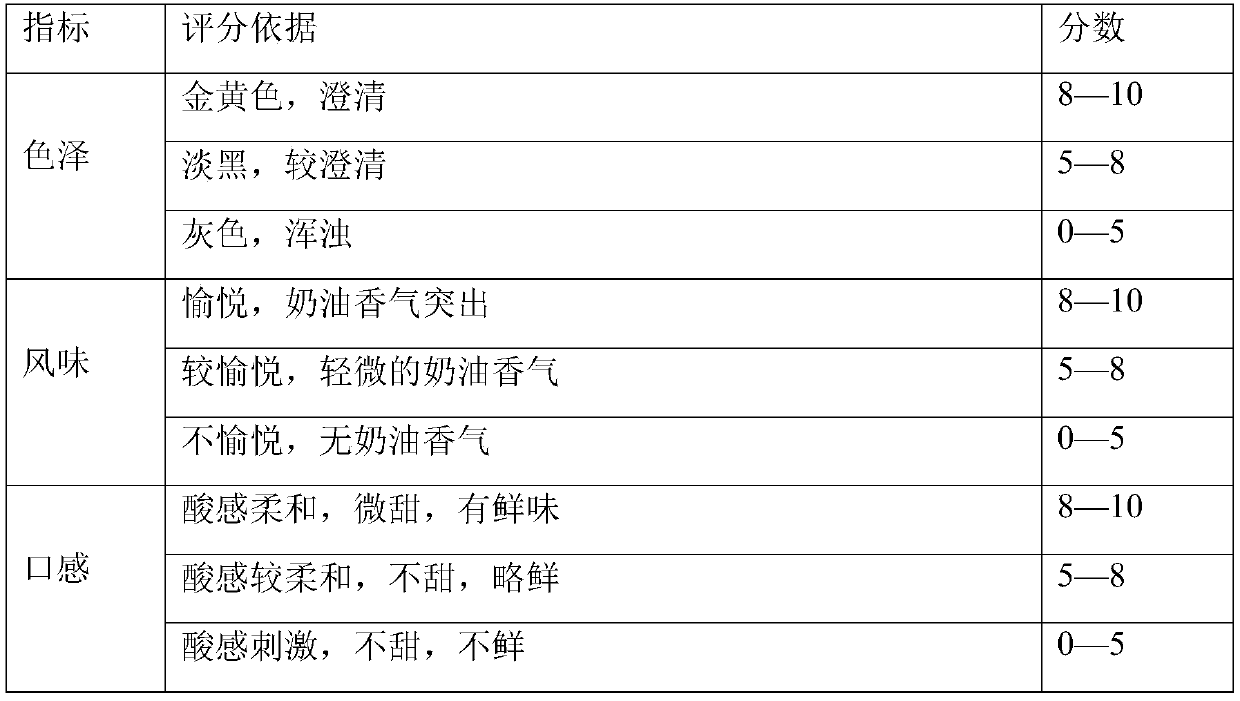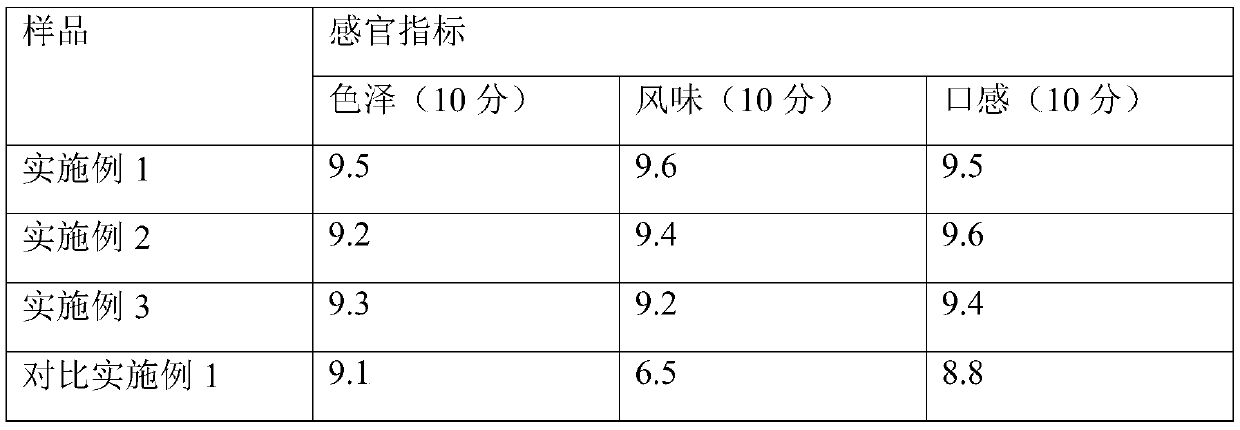Multi-strain liquid fermented vinegar rich in lactic acid and acetoin and brewing method thereof
A multi-strain fermentation and lactic acid fermentation technology, applied in the field of food fermentation engineering, can solve the problem of low lactic acid content in finished vinegar, and achieve the effects of coordinating vinegar flavor, increasing umami, and balancing acidity
- Summary
- Abstract
- Description
- Claims
- Application Information
AI Technical Summary
Problems solved by technology
Method used
Image
Examples
Embodiment 1
[0022] (1) After crushing the rice to a particle size of 80 mesh, mix it with water at a mass ratio of 1:4, stir and boil at 100°C for 30 minutes to prepare rice paste;
[0023] (2) After the rice paste in step (1) is cooled to 90°C, add α-amylase with a mass of 0.2‰ of the rice paste, and treat at 90°C for 4 hours to obtain a liquefied liquid;
[0024] (3) After the liquefied liquid in step (2) is cooled to 50°C, add glucoamylase with a liquefied liquid quality of 0.8‰, and saccharify at 50°C for 48 hours to obtain a saccharified liquid;
[0025] (4) After cooling the saccharified liquid in step (3) to 29°C, add Saccharomyces cerevisiae with a saccharified liquid quality of 0.15‰, and carry out anaerobic fermentation at 29°C for 7 days to obtain wine mash;
[0026] (5) Mix bran and water at a mass ratio of 1:4, soak for 4 hours, and filter through 4 layers of gauze to obtain bran extract;
[0027] (6) Lactobacillus helveticus with a quality of 0.2‰ was added to the bran extr...
Embodiment 2
[0035] (1) After crushing the rice to a particle size of 100 mesh, mix it with water at a mass ratio of 1:4, stir and boil at 100°C for 30 minutes to prepare rice paste;
[0036] (2) After the rice paste in step (1) is cooled to 90°C, add α-amylase with a mass of 0.1‰ of the rice paste, and treat at 90°C for 2 hours to obtain a liquefied liquid;
[0037] (3) After the liquefied liquid in step (2) is cooled to 50°C, add glucoamylase with a liquefied liquid quality of 0.4‰, and saccharify at 50°C for 48 hours to obtain a saccharified liquid;
[0038] (4) After cooling the saccharified liquid in step (3) to 29°C, add Saccharomyces cerevisiae with a saccharified liquid quality of 0.2‰, and carry out anaerobic alcoholic fermentation at 29°C for 7 days to obtain wine mash;
[0039] (5) Mix bran and water at a mass ratio of 1:4, soak for 4 hours, and filter through 4 layers of gauze to obtain bran extract;
[0040] (6) Add Lactobacillus helveticus with a quality of 0.25‰ to the bran...
Embodiment 3
[0046] (1) After crushing the rice to a particle size of 90 mesh, mix it with water at a mass ratio of 1:4, stir and boil at 100°C for 30 minutes to prepare rice paste;
[0047] (2) After cooling the rice paste in step (1) to 90°C, add α-amylase with a rice paste mass of 0.15‰, and treat at 90°C for 3 hours to obtain a liquefied liquid;
[0048] (3) Cool the liquefied liquid in step (2) to 50°C, add glucoamylase with a mass of 0.6‰, and saccharify at 50°C for 60 hours to obtain a saccharified liquid;
[0049] (4) After cooling the saccharified liquid in step (3) to 29°C, add active dry yeast with a saccharified liquid quality of 0.2‰, and carry out anaerobic fermentation at 29°C for 7 days to obtain wine mash;
[0050] (5) Mix bran and water at a mass ratio of 1:4, soak for 4 hours, and filter through 4 layers of gauze to obtain bran extract;
[0051] (6) Add Lactobacillus helveticus with a bran extract quality of 0.2‰ to the bran extract in step (5), and perform anaerobic la...
PUM
 Login to View More
Login to View More Abstract
Description
Claims
Application Information
 Login to View More
Login to View More - R&D
- Intellectual Property
- Life Sciences
- Materials
- Tech Scout
- Unparalleled Data Quality
- Higher Quality Content
- 60% Fewer Hallucinations
Browse by: Latest US Patents, China's latest patents, Technical Efficacy Thesaurus, Application Domain, Technology Topic, Popular Technical Reports.
© 2025 PatSnap. All rights reserved.Legal|Privacy policy|Modern Slavery Act Transparency Statement|Sitemap|About US| Contact US: help@patsnap.com



